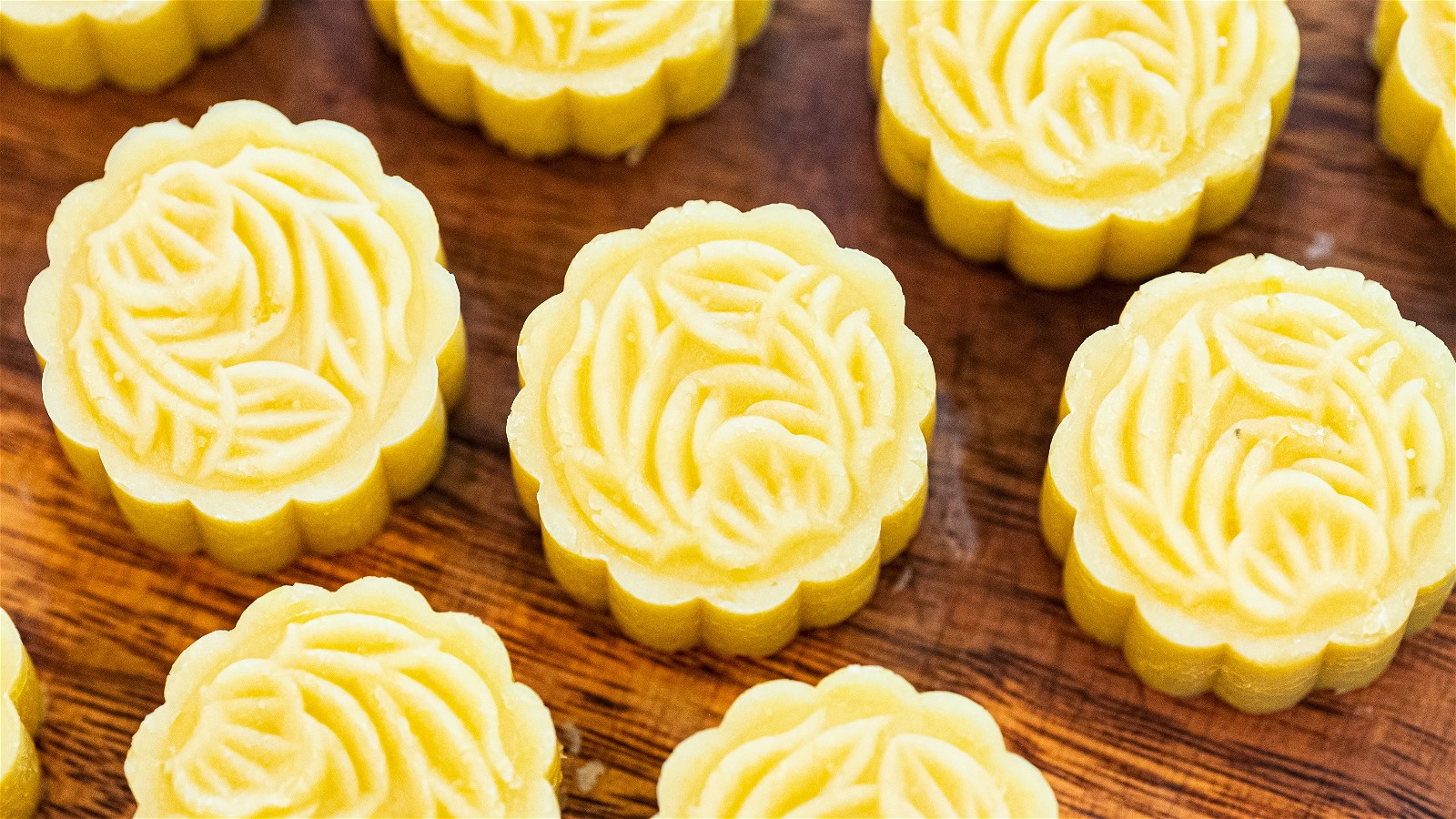Mung bean cake is easy to make and has an interesting taste and texture. When you take a bit, the pastry will melt in your mouth and leave a nutty, milky taste on your tongue.

INGREDIENTS
- 200g (7 oz) of skinless mung beans
- 300g (1.25 cups) of water
- 56g (1/2 stick) of unsalted butter
- 100g (8 tbsp) of sugar
- 63 g (3 tbsp)of honey
- 1/4 tsp of salt
Soak the skinless mung bean overnight, this will reduce the cooking time. Rinse the beans under running water, then drain completely.

You can also use skin-on mung beans, but the color will be dark green. The skin prevents the water from percolating through the center so it will take about 1.5 hours of simmering for the beans to turn soft, while the skinless mung beans only need 20 minutes.

Add the mung beans into a nonstick pot, and follow up with 1.25 cups of water. Turn the heat to medium and bring the water to a simmer. Don’t go away because it only takes a few minutes. If you forget the time, it will overflow. Once you see it is bubbling, put on the lid and switch the heat to lowest. Let it simmer for 20 minutes. Make sure to set a timer, so you don’t burn the bottom.

When you are done, the beans should look like this. Check the texture; you should be able to crush it easily. Move it off the stove and continue to crush the beans until nice and smooth. If you are using the skin on mung beans, it will be much hard to crush the beans, and you will have to use a blender to get a smooth texture.

Next, add 100g of sugar, 3 tbsp of honey, 1/4 tsp of salt, and 1/2 stick of unsalted butter. Put the pot back on the stove and stir until the butter melts. In the old days, we used pork lard, but I think butter tastes way better. If you want to make this vegan, use coconut butter.

Now that the butter is melted, you will find that the paste becomes runny again. We have to evaporate the excess moisture. This process will take about 15 minutes. I usually divide it into three stages.

You can have the heat on medium or medium-low at the first stage because the paste is wet and runny. You are not risking burning it.

As the moisture evaporates, the paste will thicken and start separating from the nonstick pot’s bottom. The paste will follow your movement when you stir, but it still sticks to your spatula. That is what I call the second stage. Now you have to turn the heat low so you don’t burn it.

Check it out; the paste is more solid now and doesn’t stick to the spatula anymore. It acts more like dough. That is what I call the third stage – done.

Remove it to the side and let it cool. Make sure you cover it so it doesn’t form a hard skin.
Once the temperature cools down to a point that your hand can handle, divide the mung bean paste into 12 even pieces. Each one should e 50 grams. Roll it in between your hands and shape it into a round ball. This recipe is enough to make 10-12 mung bean pastry.

If you don’t care about the presentation, you can just serve them like this. I perfect my mung bean pastry to look more exquisite so I will use a mooncake presser.
Take one mung bean ball and put it into the mold. Gently press it down onto a clean cutting board with steady pressure. Stay there for a few seconds to establish the shape. Then release it. Look at that – so pretty. I love molding all kinds of desserts. It is satisfying to see them come out nice and neat.








































































